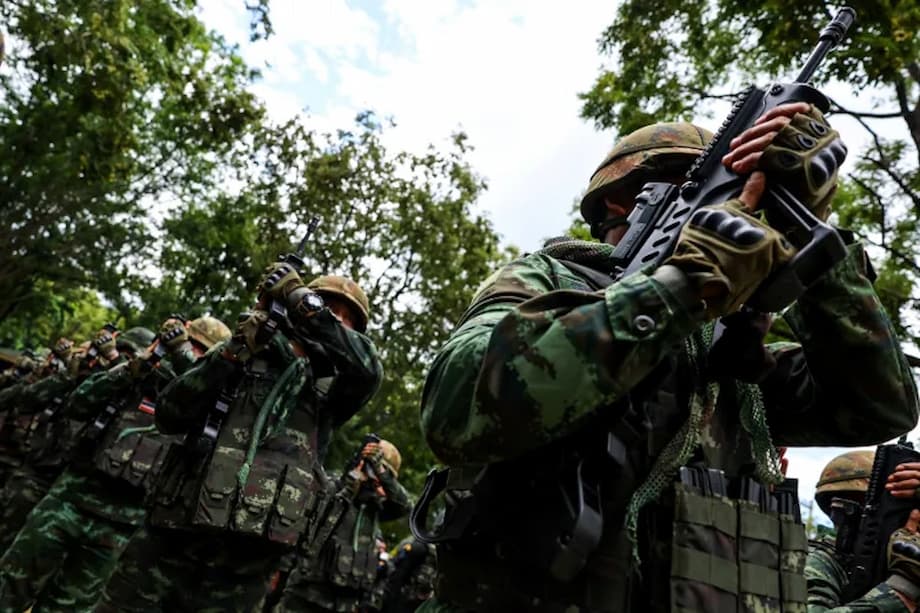Border on the Brink: How the 2025 Thai-Cambodia Clashes Shook Southeast Asia
The summer of 2025 saw Southeast Asia’s most dangerous border flare-up in over a decade, as Thailand and Cambodia’s long-simmering territorial dispute erupted into open warfare. The fighting, which left dozens dead and hundreds of thousands displaced, not only threatened regional stability but also plunged Thailand into political chaos, exposed the fragility of international mediation, and underscored the enduring scars of colonial-era borders.
- Border on the Brink: How the 2025 Thai-Cambodia Clashes Shook Southeast Asia
- How Did the Conflict Erupt?
- Why Is This Border So Contentious?
- The Human Cost: Civilians Caught in the Crossfire
- Political Fallout in Thailand: Shinawatra Rule Under Siege
- Diplomatic Maneuvers and International Mediation
- Economic and Social Impact: Tourism, Trade, and Livelihoods
- Historical Legacies and the Path Forward
- In Summary
How Did the Conflict Erupt?
The roots of the 2025 Thailand-Cambodia border conflict stretch back centuries, but the immediate spark came in late May. A skirmish near the ancient Preah Vihear Temple—a UNESCO World Heritage site perched atop a disputed escarpment—left a Cambodian soldier dead. Both sides blamed each other for the violence, and the incident triggered a rapid escalation: Cambodia banned Thai goods, Thailand closed border crossings, and diplomatic relations soured.
By July, tensions had reached a boiling point. On July 23, a Thai patrol in Ubon Ratchathani province triggered a landmine, injuring five soldiers. Thailand accused Cambodia of laying new mines, while Cambodia insisted they were remnants from previous conflicts. The next day, full-scale fighting broke out near the Ta Muen Thom Temple, quickly spreading to at least a dozen locations along the 800-kilometer border.
Timeline of Escalation
According to reports from both sides and international observers, the violence unfolded rapidly:
- Early morning, July 24: Both sides accused each other of drone incursions and provocations near the Ta Muen Thom Temple.
- 8:20 a.m.: Cambodian forces reportedly opened fire; Thailand responded in kind.
- By 10:30 a.m.: Clashes had erupted in at least six locations, with heavy weapons, artillery, and rockets used.
- Thai F-16 jets bombed Cambodian military targets, while Cambodia fired BM-21 rockets into Thai territory, hitting civilian areas.
- By midday: Thai authorities closed all border checkpoints, and both countries recalled their ambassadors.
The violence left at least 43 people dead—most of them civilians—and more than 300,000 people displaced on both sides of the border. Hospitals, schools, and homes were destroyed, and entire villages emptied as residents fled artillery and rocket fire.
Why Is This Border So Contentious?
The Thailand-Cambodia border dispute is a legacy of colonial-era treaties and centuries of rivalry. The most contested sites are the Preah Vihear and Ta Muen Thom temples, both built by the Khmer Empire between the 9th and 12th centuries. When France colonized Cambodia in the 19th century, it forced Siam (now Thailand) to cede territory, culminating in the 1907 Franco-Siamese treaty. This treaty returned the Preah Vihear temple to Cambodia, but left the status of surrounding land ambiguous.
After Cambodia’s independence in 1953, Thailand reoccupied the Preah Vihear temple, prompting Cambodia to take the dispute to the International Court of Justice (ICJ). In 1962, the ICJ ruled that the temple belonged to Cambodia, but did not clarify the border around it. This ambiguity has fueled repeated clashes, most recently in 2008–2011 and again in 2025.
Nationalism and Historical Memory
Nationalist sentiment runs high on both sides. Cambodians accuse Thais of appropriating Khmer culture and territory, while Thais argue that their historical conquests justify claims to certain border areas. The 2008 registration of Preah Vihear as a UNESCO World Heritage site by Cambodia reignited tensions, with Thailand protesting the move and both sides exchanging fire in the years that followed.
The Human Cost: Civilians Caught in the Crossfire
The 2025 clashes were especially devastating for civilians. Artillery and rocket attacks struck hospitals, schools, gas stations, and homes. In Thailand’s Surin and Sisaket provinces, at least 13 civilians and one soldier were killed in a single day, with dozens more wounded. Cambodian authorities reported similar devastation, though official casualty figures were not immediately released.
More than 300,000 people were displaced, seeking shelter in makeshift camps, pagodas, and schools far from the fighting. Many lost their homes and livelihoods, and even after the ceasefire, tens of thousands remained unable or unwilling to return due to ongoing troop deployments and fear of renewed violence.
Phian Somsri, a resident of Ubon Ratchathani, described fleeing her home as artillery and rockets struck: “I am so concerned that the bomb drop and the bullet will kill us. I am worried for my people, my children, my relatives and especially for the troops who fight.”
Political Fallout in Thailand: Shinawatra Rule Under Siege
While the border fighting raged, Thailand’s political establishment was thrown into turmoil. Prime Minister Paetongtarn Shinawatra, daughter of the influential former leader Thaksin Shinawatra, was suspended from office after the leak of a phone call with Cambodia’s former prime minister Hun Sen. In the call, she appeared to criticize her own army’s actions and offered to “take care of” Hun Sen’s requests, fueling accusations of disloyalty and undermining the powerful Thai military.
The Constitutional Court suspended Paetongtarn, and a key coalition partner withdrew from her government. Acting Prime Minister Phumtham Wechayachai, a loyalist from the Peua Thai party, struggled to maintain order as nationalist rhetoric soared and opposition parties pushed for a no-confidence motion. The crisis exposed deep divisions within Thailand’s ruling coalition and raised the specter of another military coup—a recurring feature of Thai politics.
“Her party, Pheu Thai, is in a very fragile situation right now. They don’t have much option but to go along with what the military wants,” said Tita Sanglee, an associate fellow at the ISEAS–Yusof Ishak Institute.
Meanwhile, Thaksin Shinawatra, recently returned from exile, faced renewed charges of insulting the monarchy and manipulating his daughter’s administration. Analysts suggested that royal protection for the Shinawatra family may have been withdrawn, leaving them vulnerable to political rivals.
Diplomatic Maneuvers and International Mediation
The border conflict quickly drew in regional and global powers. Cambodia appealed to the United Nations Security Council, calling the violence a grave threat to regional peace. The Security Council held an urgent private meeting, with members urging restraint and dialogue. Malaysia, as chair of ASEAN (Association of Southeast Asian Nations), helped broker a ceasefire, with support from China and the United States.
The ceasefire, agreed on July 28 in Kuala Lumpur, froze troop deployments along the border and called for the immediate release of captured soldiers. Both sides pledged to halt attacks on civilians and civilian infrastructure. However, the truce remained fragile, with sporadic clashes, landmine incidents, and mutual accusations of violations continuing in the weeks that followed.
Why Is Lasting Peace So Elusive?
Despite international mediation, the underlying issues remain unresolved. Thailand rejects Cambodia’s appeal to the ICJ for a final border ruling, insisting on bilateral negotiations. ASEAN’s non-interference policy limits its ability to enforce peace, and while China has leverage over both countries, it is seen as more closely aligned with Cambodia, raising concerns in Bangkok and among neighboring states wary of Beijing’s regional ambitions.
Meanwhile, both governments have used the crisis to rally nationalist support and distract from domestic challenges. Cambodia’s leadership, under Prime Minister Hun Manet and his father Hun Sen (now Senate president), has invoked the border dispute to shore up legitimacy amid economic difficulties and a lack of opposition. In Thailand, the military and conservative factions have seized on the conflict to undermine the Shinawatra family and reassert their influence.
Economic and Social Impact: Tourism, Trade, and Livelihoods
The border clashes have had a devastating impact on the economies of both countries, particularly in the affected provinces. Thailand’s tourism sector alone is losing nearly $92 million per month, with over 5,000 hotel rooms cancelled and major attractions closed. Hotels that remain open are filled with aid workers and journalists rather than tourists, and group travel bookings have collapsed.
Cross-border trade has slowed dramatically, with checkpoints closed or operating under strict controls. Cambodia has banned imports of Thai fruits and vegetables, while Thailand has restricted internet and power links to Cambodia. Local businesses, farmers, and traders on both sides have suffered heavy losses, and many displaced residents have lost their homes and means of income.
Humanitarian Response
Governments and aid organizations have scrambled to provide shelter, food, and medical care to the displaced. In Thailand’s Surin province, Acting Prime Minister Phumtham Wechayachai visited evacuation centers and promised increased compensation for damaged homes. Local authorities are assessing damage and preparing for the gradual return of evacuees, though many remain hesitant due to ongoing security concerns.
Historical Legacies and the Path Forward
The 2025 border conflict is a stark reminder of how unresolved colonial-era borders and nationalist politics can still ignite violence in the 21st century. The Preah Vihear and Ta Muen Thom temples, once symbols of shared heritage, have become flashpoints for rivalry and resentment. Despite repeated rulings by international courts and mediation efforts, the ambiguity of the border and the power of nationalist narratives continue to thwart lasting peace.
As Firstpost noted, “The tragedy of Preah Vihear is that both Thailand and Cambodia have chosen to emphasise what is disputed about the Hindu temple’s history rather than its potential as a connection between the two Buddhist neighbours.”
For now, the ceasefire holds, but the situation remains tense. Troops from both sides remain deployed near the border, and sporadic violence—including new landmine incidents—continues to threaten the fragile peace. Displaced families hope for a return to normal life, but many fear that another spark could reignite the conflict at any moment.
In Summary
- The 2025 Thailand-Cambodia border conflict erupted after decades of unresolved territorial disputes, particularly around ancient temples.
- Fighting from July 24–28 left at least 43 dead and over 300,000 displaced, with civilians bearing the brunt of the violence.
- The crisis destabilized Thailand’s government, leading to the suspension of Prime Minister Paetongtarn Shinawatra and exposing deep political divisions.
- International mediation led to a ceasefire on July 28, but the truce remains fragile, with ongoing troop deployments and sporadic clashes.
- The conflict has devastated local economies, especially tourism and cross-border trade, and left many residents homeless and fearful.
- Historical grievances, nationalist sentiment, and colonial-era borders continue to fuel tensions, making lasting peace elusive.
- Both countries face pressure to resolve the dispute peacefully, but the risk of renewed violence remains high as underlying issues persist.












